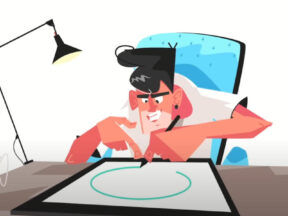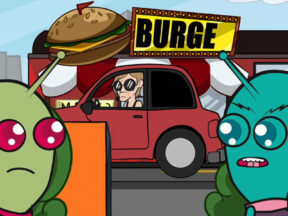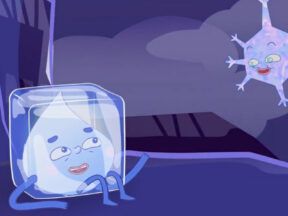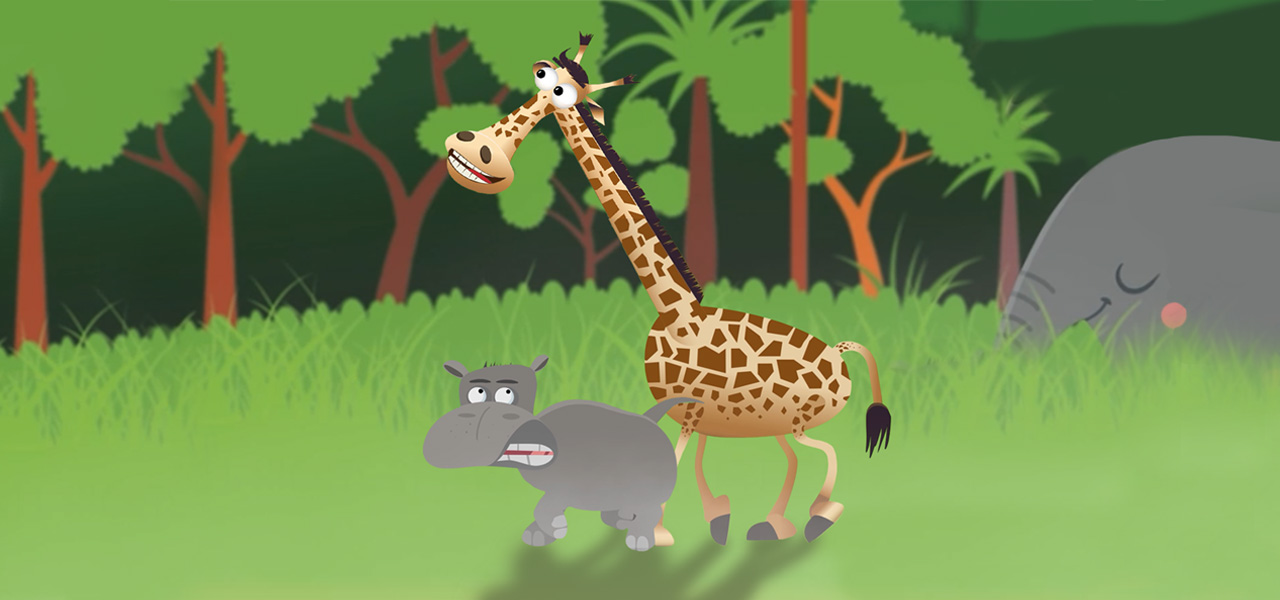
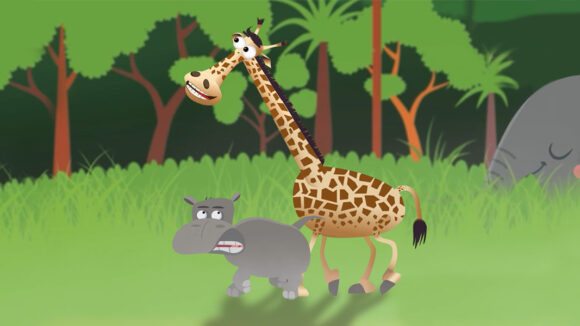
How Crazy Cartoon Animation Studio Founder Tamás Zsolt Nagy Uses CTA 5’s Vector Graphic Animation Tool To Create Characters
In our ongoing series of pieces published in partnership with animation software developer Reallusion, Crazy Cartoon Animation Studio founder Tamás Zsolt Nagy joined us to talk about the benefits of Cartoon Animator 5 and how the software helped him launch his animation career.
Tamás Zsolt Nagy, Crazy Cartoons
Hi there. My name is Tamás Zsolt Nagy, owner of the Cartoons and Fun Youtube channel and the founder of Crazy Cartoons – Animation Studio. Since my childhood, I have been captivated by classic 2d animation, immersing myself in the magic of thousands of timeless Disney, Warner Bros, and Hanna-Barbera old-school cartoons. These iconic animated films and series have become the foundation and inspiration for the distinctive style I strive to infuse into all my projects.
When I decided four years ago to jump into the magical world of cartoon animation, I began by testing many software products. I knew that I needed a professional platform that I could use as a beginner. Luckily, I found Cartoon Animator 4 (CTA4), a powerful and versatile software package that had many types of useful add-ons. I have gained lots of experience over the last three years working with CTA4. It does not matter if you are a beginner or a professional, anyone can enjoy using this software regardless of skill level.
Last year, we witnessed the exciting launch of Cartoon Animator 5, introducing a plethora of remarkable innovations. In this article, accompanied by an exclusive behind-the-scenes video, we delve into the demonstration of the latest techniques offered by this cutting-edge software. I’ll take you through my journey of designing the charming vector graphic character Maxi while harnessing the power of spring bones and exploring the possibilities of the free-form deformation tool to enhance animation dynamics. Additionally, I’ll showcase the seamless application of standard CTA functions, such as Lip Sync and 360° Head creation, which played crucial roles throughout the animation process. Let’s embark on this creative adventure together.
2D Character Design in Vector Graphics Format
Cartoon Animator 5 has introduced support for the SVG (Scalable Vector Graphics) format, offering the convenience of working with vector-based objects. This innovation has significantly simplified the design process, which I find delightful. For my first venture into creating characters in vector graphics, I crafted a giraffe using Adobe Illustrator, merging the human head and non-human quadruped SVG templates. The seamless editing experience within the right structure saved me considerable time. Importing the SVG file into CTA was a breeze, and the results were nothing short of fantastic. CTA effortlessly handles the SVG character as vector graphics, granting me the freedom to zoom in without compromising any details of the character.

360 Head Design
The 360 Head Creator is a crucial tool when it comes to infusing life into your characters’ faces. In designing the head, you can achieve a remarkably 3d-like appearance when animating facial expressions. Personally, I prefer a more subtle movement of the head, so I typically avoid setting a wide angle range for the face, opting for just enough to facilitate the appropriate animation. As part of my character creation process, I always set up the 360 head as the final step right after importing the rigged character into CTA. This ensures that my characters truly come to life with expressive and engaging facial animations.
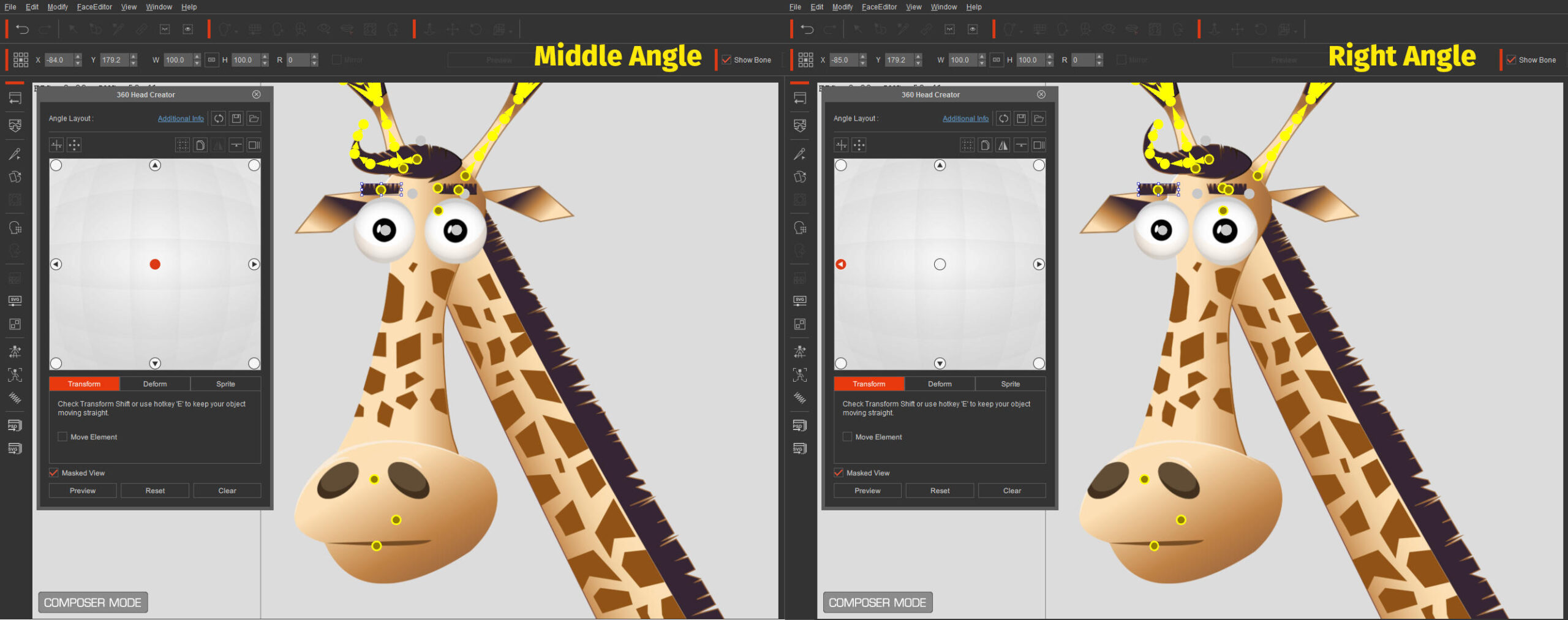
Spring Bones
Introducing Spring Bones in CTA 5 was a game-changer. Prior to this feature, I invested significant effort in making character parts like hair move naturally with elasticity in the wind. However, with spring bones, everything changed. When crafting my latest giraffe character, I integrated spring bones into the front hair, ears, horn, and tail. I was particularly thrilled by the newfound elasticity in the ears’ appearance. The animation’s visual appeal exceeded my expectations, portraying a lifelike giraffe motion like never before. Spring Bones revolutionizes the animation process by allowing you to set the bones once and forget about them. The automatic elastic motion of the sprites follows your predefined settings. If you haven’t explored spring bones yet, I highly recommend it for its game-changing capabilities.
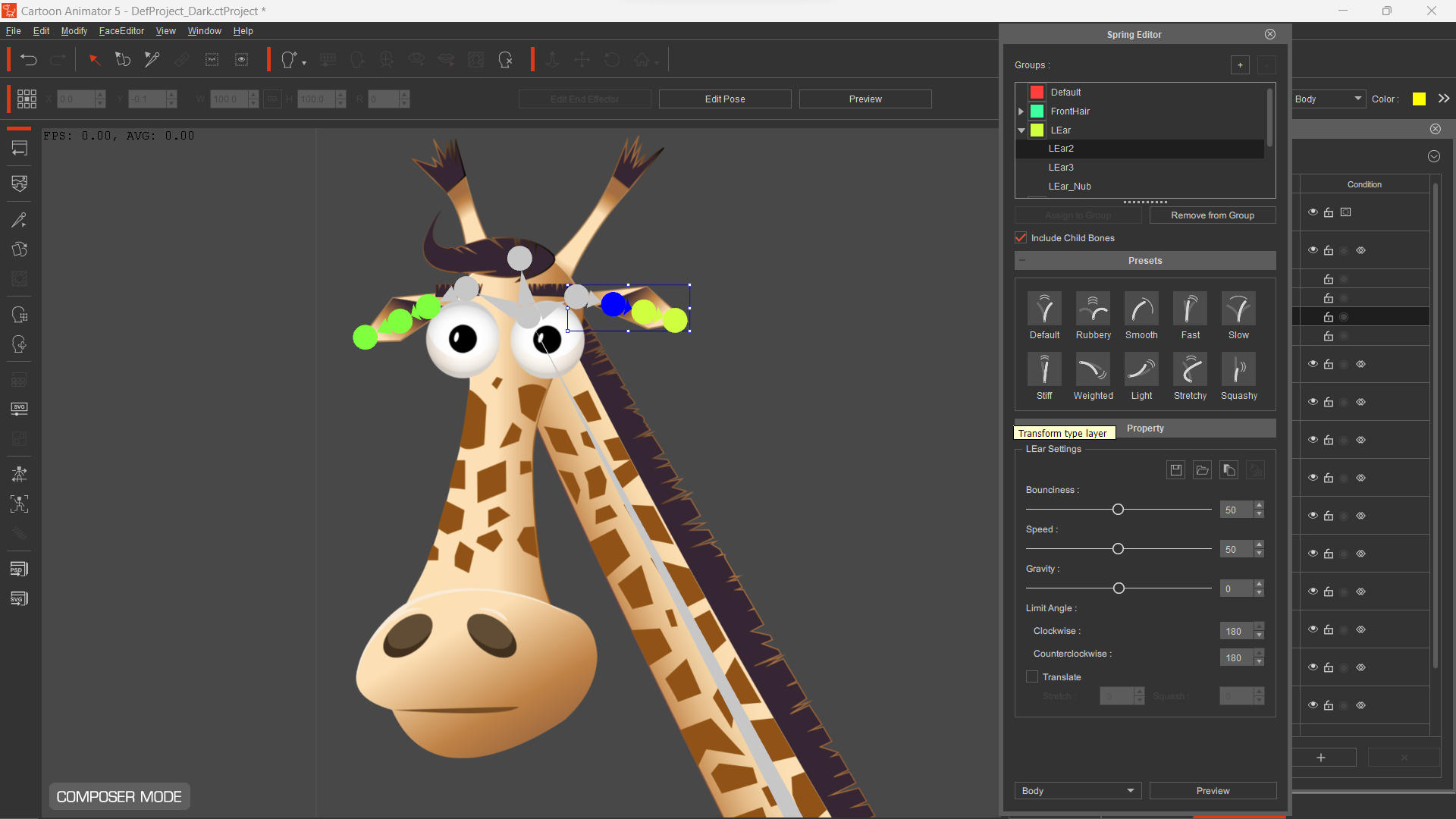
2D Character Animation with Free-Form Deformation (FFD)
Prior to CTA version 5, I utilized deformation on sprites for characters but couldn’t apply it to the entire actor. However, with the introduction of the FFD feature, we can now achieve this. FFD has significantly enhanced the dynamism of our characters. In the story of Maxi, The Giraffe, I made extensive use of FFD, notably in the scene where Hunter gets scared of Maxi. The exaggerated FFD effect amplifies Hunter’s reaction, making the character much funnier. I’d like to acknowledge Garry Pye, the brilliant designer behind Hunter, whose fantastic characters have been instrumental in bringing my animations to life.
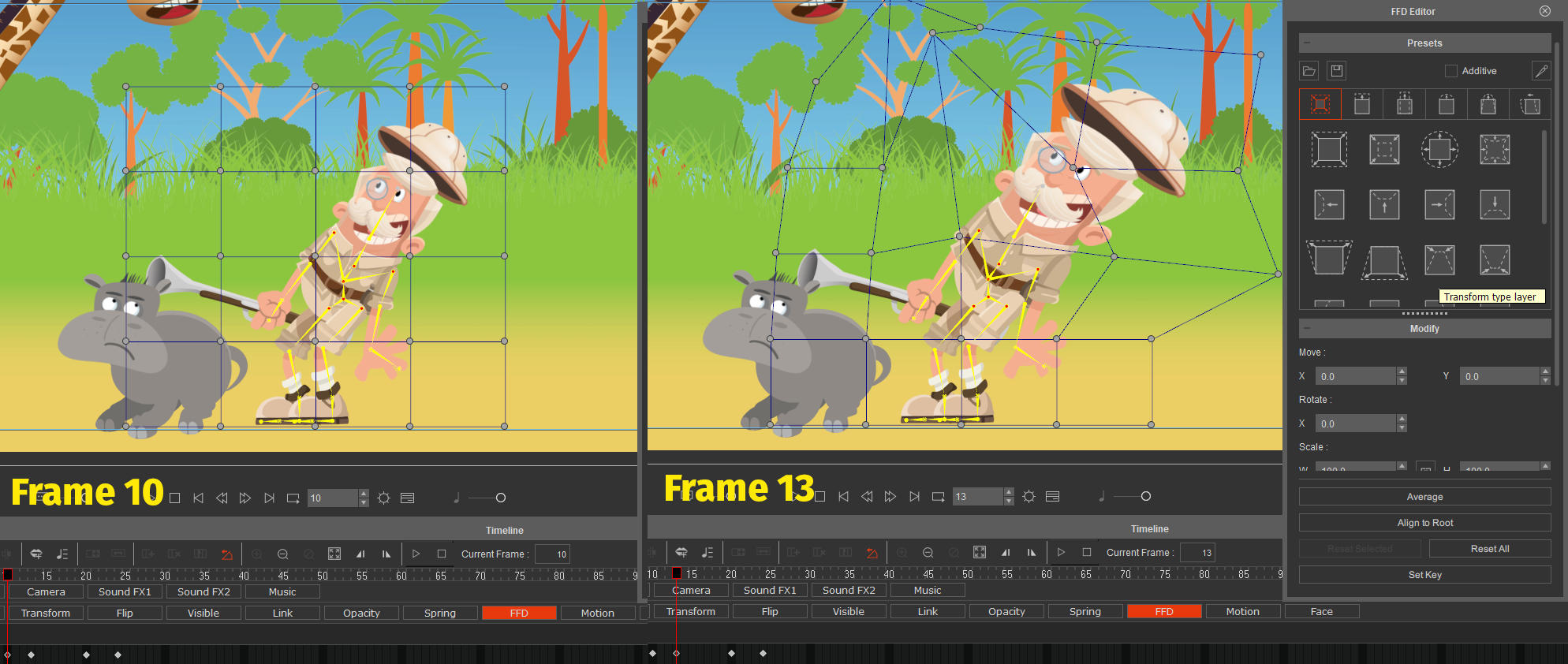
Lip Sync Animation
Correctly designing the character’s mouth sprites enables a delightful experience with CTA’s lip-sync function. This efficient tool saves you time by eliminating the need for frame-by-frame animation when setting the mouth sprite. Lip-sync is achieved by importing the character’s voice (wav file) using the Create Script/Wav File function. Should you find the outcome unsatisfactory, simply replace the relevant sprite with a more fitting one. Alternatively, Cartoon Animator offers additional options for lip-sync, such as Record Voice, Text-to-Speech, and Cartoon Script, which I occasionally utilize as well.
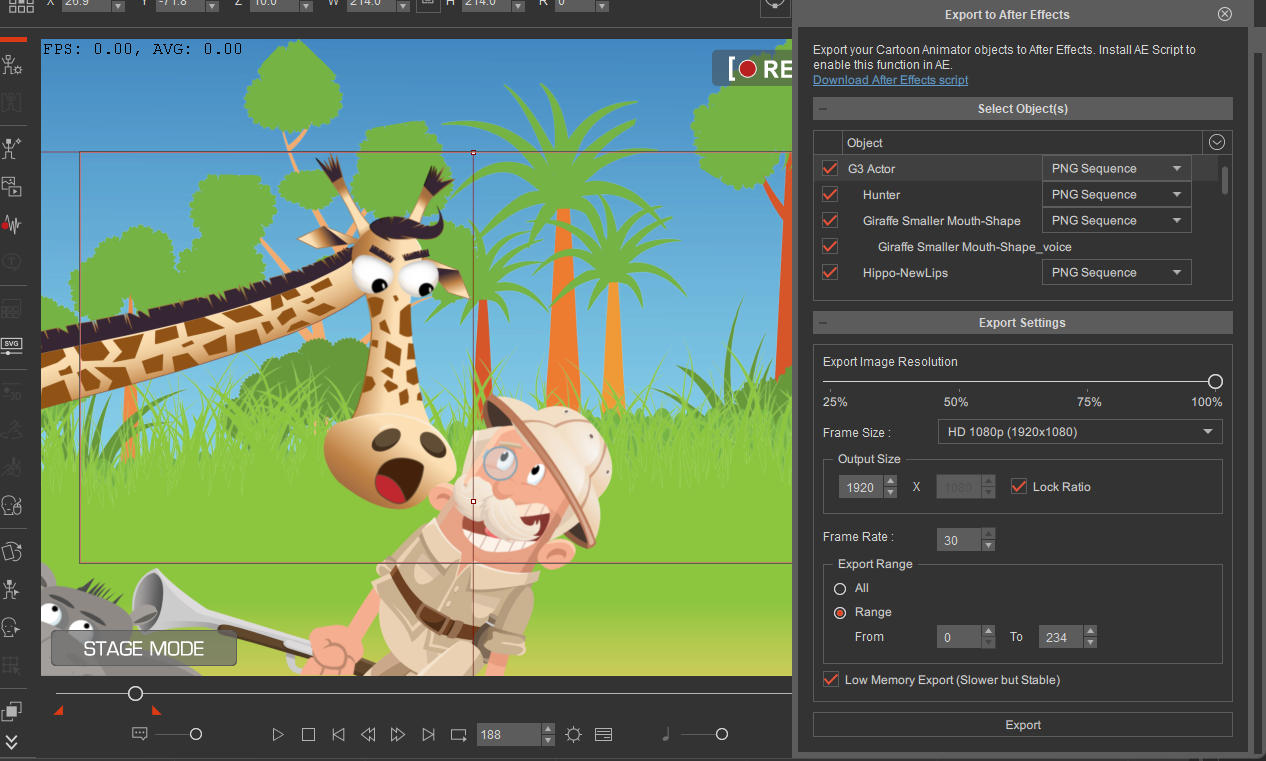
Export for Post-production in After Effects
I am a passionate advocate of enhancing scenes with captivating effects. I always apply a background blur to create depth and meticulously add shadows for the actors. These effects elevate the overall video quality, making it appear more professional and truly worth the effort. To achieve these results, I rely on Cartoon Animator. However, for the post-production process third-party special software is required. Fortunately, CTA offers an add-on that seamlessly integrates with After Effects (AE), streamlining the workflow. Through this feature, we can easily export image sequences and JSON files of the scenes, which can then be conveniently imported into AE for further animation and fine-tuning.
In the following screenshot, you can see my preferred export settings. I always opt for 100% image resolution to maintain the highest quality possible. Additionally, I enable the Low Memory Export flag, which may slightly slow down the process, but the impact is negligible compared to the benefits it brings. It’s definitely worth considering this option.
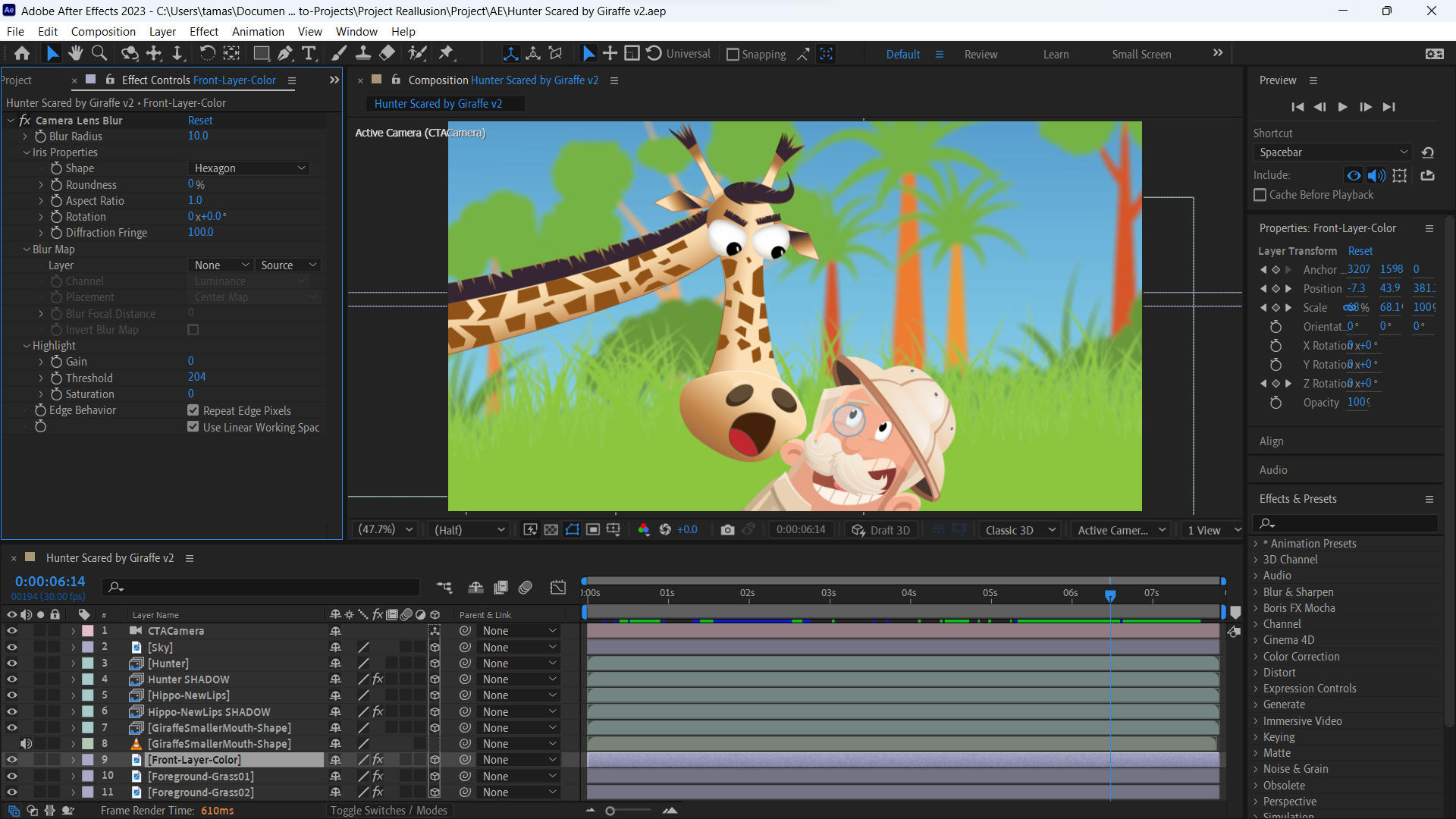
The CTA script in After Effects functions flawlessly, seamlessly importing all objects with the correct settings, encompassing camera views, motions, and layering. Now, the creative direction lies in your hands. With your expertise, you have the freedom to design the video’s appearance to your liking. So, feel free to incorporate various enhancements such as rain, lightning, color correction, shadows, blurs, filters, and more — let your imagination take the lead.
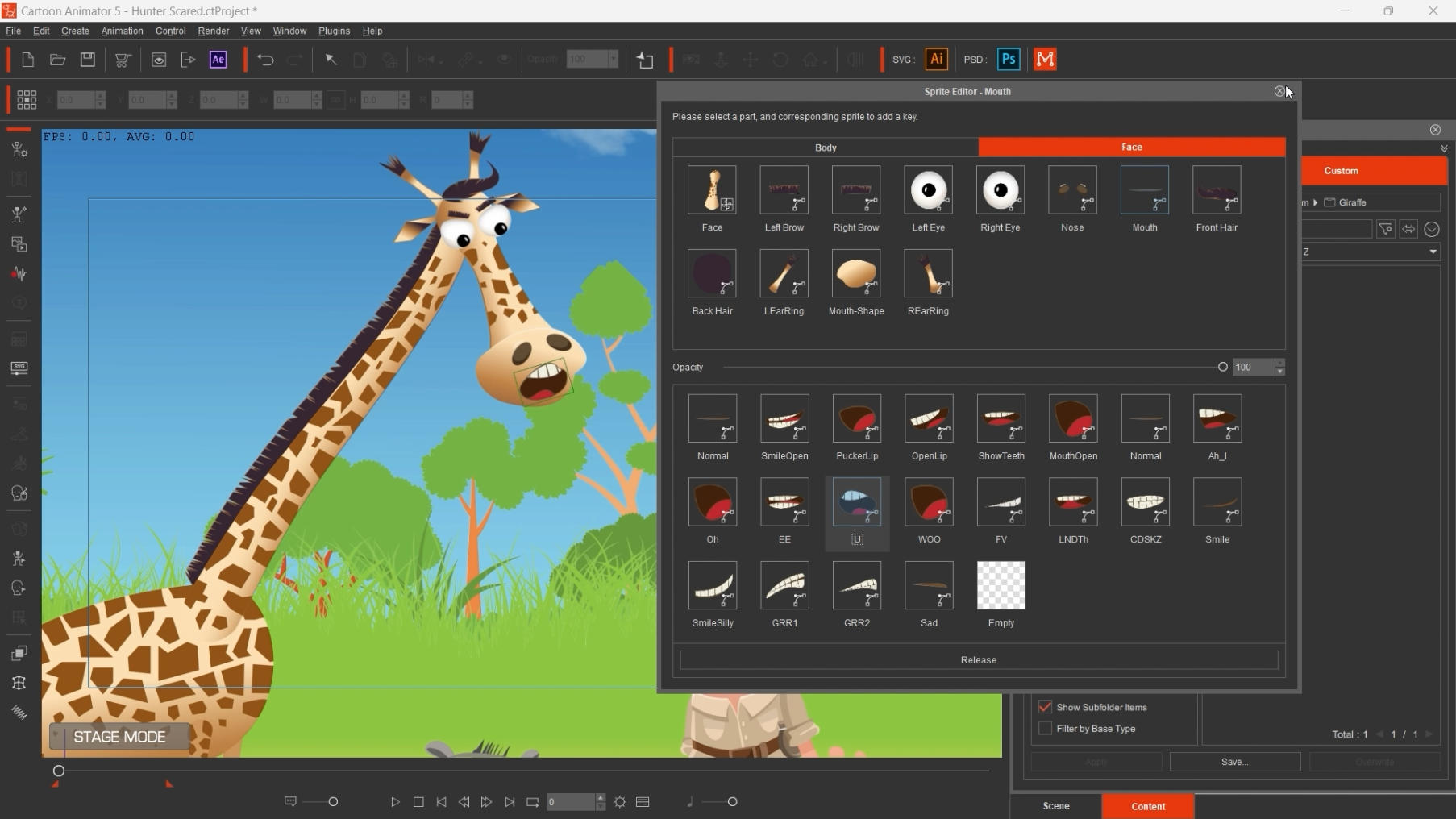
Cartoon Animator 5 is Your Friend
CTA5 has truly been the catalyst that brought my ideas to life. Despite lacking relevant experience four years ago, today, I can proudly create animations that have captivated over 300,000 viewers on Youtube. With numerous project plans swirling in my mind, it’s reassuring to possess the necessary tools and experience to turn them into reality.
I hope you enjoyed my journey and found valuable insights in my story. Maybe, after reading this article, you’ll be inspired to venture into the world of cartoon animation. If you’re unsure about which software to use for your creative journey, look no further than Cartoon Animator 5. It will undoubtedly become your most trusted companion along the way.
More info on CTA 5:
2D Animation Software for Cartoon Maker | Cartoon Animator
Try CTA 5 free for 30 days and get 1,700+ ready-made assets:

